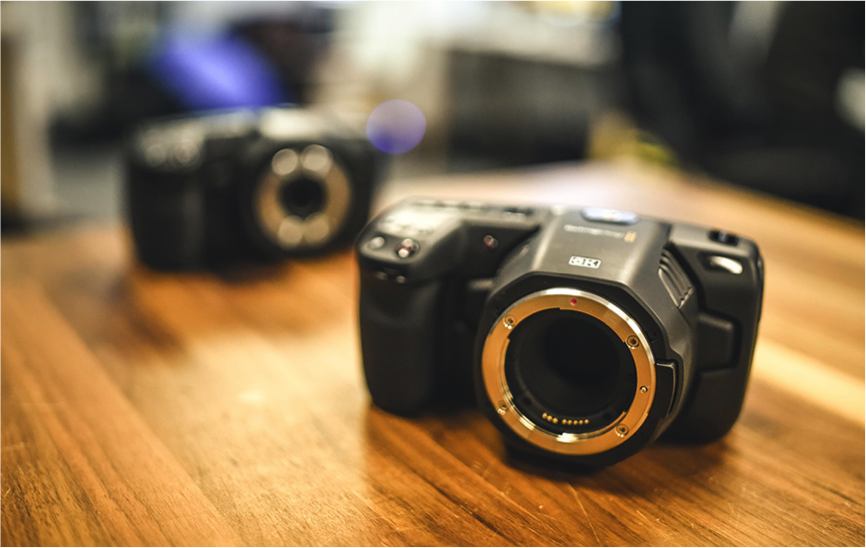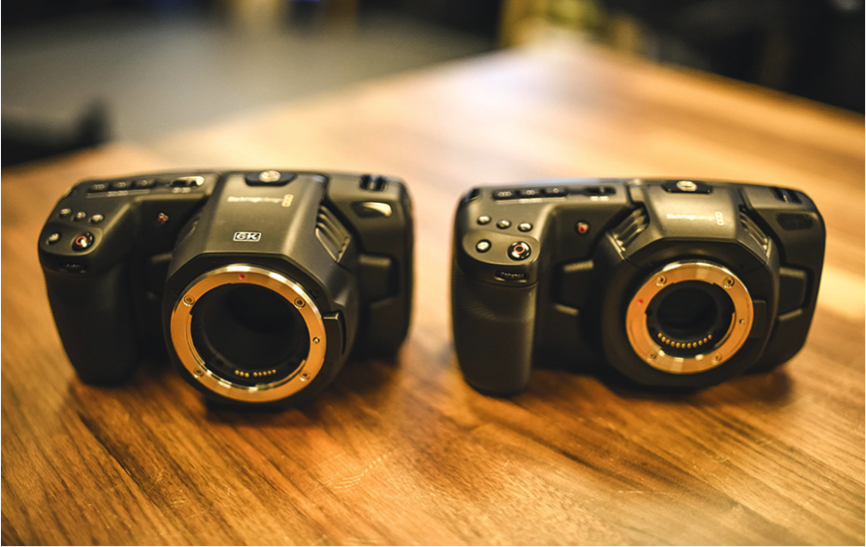Recently, Rocket Productions managed to acquire the new Blackmagic Pocket 6K, and here is what we learned…
Blackmagic shook the video industry when they announced the Blackmagic Pocket Cinema Camera 6K (BMPCC6K).
This was a strange move for one of the companies leading the way in camera innovation, and was considered considerably unexpected by many from a business point of view, as, having only released a new 4K model recently, Blackmagic were seemingly cannibalizing their own products that are currently in circulation and were doing considerably well. This is in no way to say that we wouldn’t want to see this more in companies, in fact, from a consumer point of view, Blackmagic is running a business model that is seen few and far between in this day and age – many companies waiting for significant decreases in interest in their most innovative product before releasing the next ‘step.’ It has shown significant confidence in their product on Blackmagics part to release the new camera so soon, so naturally, we were keen to try it out for ourselves.
From initial inspection, one would thing that the Blackmagic Pocket 6K is essentially identical to its counterpart, similar design and control layout with the signature Blackmagic ‘look.’ This is until however, you look at the “nose” of the camera. The new edition possesses an EF mount, extending a fair bit further than the previous Blackmagic Pocket Cinema Camera 4K. Looking closer, you will find that the camera is fitted with a super 35 sensor; the Blackmagic Pocket 6K boasting a larger upgrade of its smaller sibling’s Micro Four Thirds sensor in the Blackmagic Pocket 4K.
And yes, as the name has indicated, and you can probably already guess, the Blackmagic Pocket 6K can shoot up to 50 FPS in 6K and 60 FPS in 6K with a small crop.
Blackmagic Pocket 6K’s Amazing Image Quality
The Blackmagic Pocket 6K definitely holds up to the high standard we have come to expect, posessing a great blend of great dynamic range, sharpness and colour throughout. The images that come out of the Blackmagic Pocket 6K could come off comparable for stills as it has the high resolution of 6144 x 3456, which is approximately the equivalent of a 21.2 megapixel camera.
The high formats and bit rates allow this camera to be pushed significantly when grading, allowing the shots to cater for much more creative looks than previously possible in other lines, significantly adding to the positives that come with the use of this camera.
Newly Released Blackmagic Raw Plugin for Adobe Premiere Pro
Blackmagic Raw is a powerful raw format released by Blackmagic design that has been released alongside their newly released cameras. They released last week a plugin support for both Premiere pro and Avid Media Composer. Here at Rocket, we use the Adobe suite almost entirely, and the ability to read the Blackmagic Raw format inside of Premiere is a great addition. It allows you to manipulate the raw settings of footage just like in Davinci Resolve, changing the ISO, temperature, etc. The only downside is that it currently is not GPU accelerated so its CPU intensive, however there are talks about bringing GPU support in upcoming updates and versions.
The Verdict:
The Blackmagic Pocket 6K is a fantastic, and currently one-of-a-kind camera in its category. The results that come out of the camera are at a high end level, comparing competitively amongst the cameras with price tags north of $20k.
This camera comes in at $3500 Australian, which is incredibly good considering what you get for that price. If that seems too steep however, it should be noted that the Blackmagic Pocket Cinema Camera 4K, the previous headliner of the Blackmagic family, is a highly capable camera that comes in at about $2000 less, offering a lot of the features that the Pocket 6k offers, for a really decent price. As with the two most recent Blackmagic cameras, there is a low battery life overall, however if you can look past that, they are both amazing cameras.
A great tool to supplement these two cameras would be the Mavic 2 Pro drone, a review of which can be found here.



